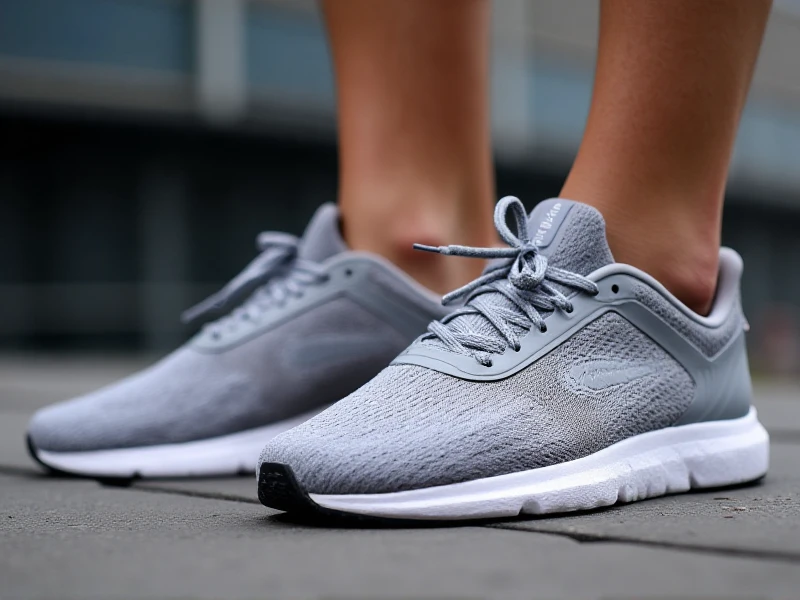Your Guide to Finding the Perfect Women's Running Shoes
2025-06-07

Selecting the right pair of running shoes is crucial for comfort, performance, and injury prevention. For women runners, it's more than just a smaller size; it's about footwear designed specifically for the biomechanics and proportions of the female foot and stride. Understanding the key factors will help you invest wisely in shoes that power your runs.
Why the Right Fit Matters
Ill-fitting or unsupportive women's running shoes can lead to blisters, black toenails, shin splints, knee pain, and other overuse injuries. Conversely, a well-chosen shoe provides:
1. Optimal Cushioning: Absorbs impact shock, protecting joints.
2. Proper Stability and Support: Corrects or accommodates your natural foot motion (like overpronation or supination).
3. Enhanced Comfort: Prevents friction points and provides a secure, comfortable hold.
4. Improved Performance: Lightweight, responsive shoes can make running feel smoother and easier.
5. Durability: Quality shoes withstand the miles without breaking down prematurely.
Key Features to Look For in Women's Running Shoes
1. Anatomical Design: Authentic women's running shoes aren't just scaled-down men's versions. They typically feature:
Narrower Heels: To minimize slippage and heel blisters.
Higher Insteps: Accommodating common female foot structure.
Softer Midsoles: Catering to often lighter body weights than male counterparts.
Specific Last Shape: Reflecting a typically wider forefoot relative to the heel.
2. Fit is Paramount:
Shop Late: Feet swell during the day and while running. Shop in the afternoon.
Sock Choice: Wear the socks you intend to run in.
Thumb's Width Rule: Ensure at least a thumb's width (approx. half an inch) of space between your longest toe and the end of the shoe.
Heel Lock: Your heel should be snug, not slipping.
Width Matters: Ensure enough room across the ball of your foot without constriction or bunching material.
3. Understanding Your Gait:
Pronation: This is how your foot rolls inward naturally upon landing. Most runners have neutral pronation, but some overpronate (roll inward excessively) or underpronate/supinate (roll outward excessively).
Neutral/Supinators: Require Neutral shoes with good cushioning.
Overpronators: Require Stability or Motion Control shoes for support.
Gait Analysis: Many specialty running stores offer video gait analysis to accurately determine your foot strike pattern and recommended shoe type.
4. Types of Cushioning:
Maximum/Plush Cushioning: Offers maximum impact absorption, great for heavier runners, long distances, or those wanting extra protection.
Moderate Cushioning: Balanced cushioning and responsiveness for most daily trainers. Often includes stability features.
Minimalist/Barefoot: For highly experienced runners seeking a natural feel; little cushioning and drop.
Responsive Cushioning: Uses energetic foams that return energy, enhancing speed.
5. Running Style and Terrain:
Road Running Shoes: Designed for pavement and hard surfaces. Focus on cushioning and flexibility. Best for: pavement, treadmills.
Trail Running Shoes: Offer aggressive lug patterns for traction on earth/mud/gravel, plus protective features like rock plates and reinforced uppers. Higher stability for uneven ground. Best for: dirt paths, technical trails.
Race Flats/Competition Shoes: Very lightweight and minimal for speed but sacrifice support and durability. For experienced runners racing shorter distances.
Versatile "Do-It-All" Shoes: Offer a balance suitable for roads, light trails, or gym work.
Top Brands Leading the Pack for Women Runners
Brands like ASICS, Brooks, Saucony, New Balance, Nike, HOKA ONE ONE, Altra, and Mizuno consistently innovate by providing exceptional quality and fit in dedicated women's running shoes. Explore collections within your primary shoe type (neutral, stability, trail) to compare the unique cushioning technologies (e.g., Brooks DNA LOFT, ASICS GEL, HOKA EVA foam) each offers.
Maintain Your Investment and Know When to Replace
Rotate between at least two pairs to allow cushioning to recover.
Clean according to manufacturer instructions (usually spot cleaning).
Air them out after each run.
Track your mileage: Most running shoes provide optimal support and cushioning for 300-500 miles. Beyond this, breakdown increases injury risk significantly. If you're experiencing unusual new aches or see visible wear on the outsole or midsole, it's likely replacement time.
Finding Your Match
Visit a reputable specialty running store. Their experienced staff and gait analysis tools are invaluable for narrowing down the right women's running shoes for your unique feet and running style. Try on multiple options, ideally walking and jogging lightly in them. Remember, the "perfect" shoe is highly individual – what feels incredible for your training partner might not work for you. Trust your feel.
Investing time in finding the ideal pair of women's running shoes is an investment in your running journey. With the right support beneath your feet, you can run stronger, farther, and more comfortably for many miles to come. Lace up and enjoy the road or trail!
Category: